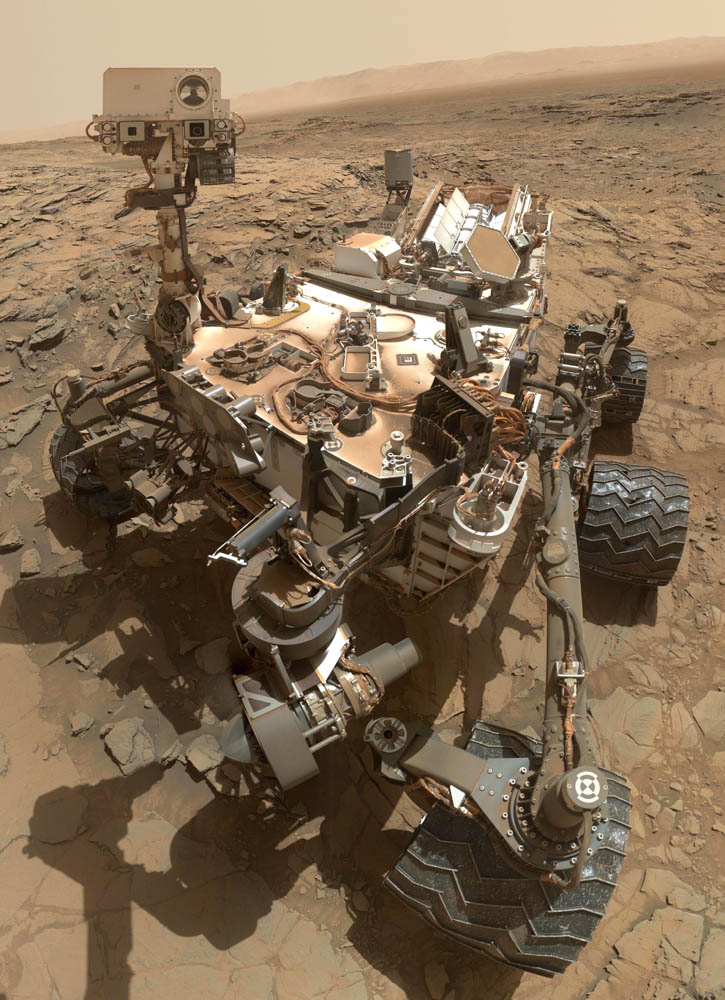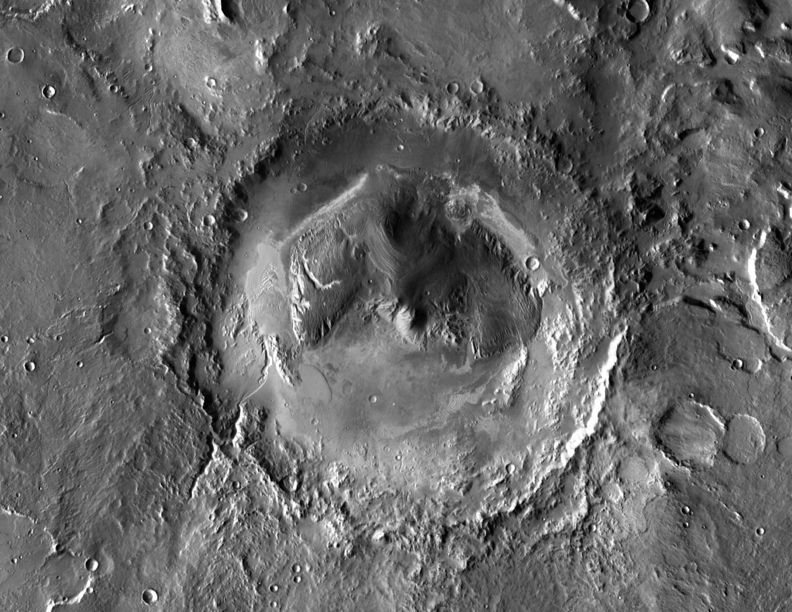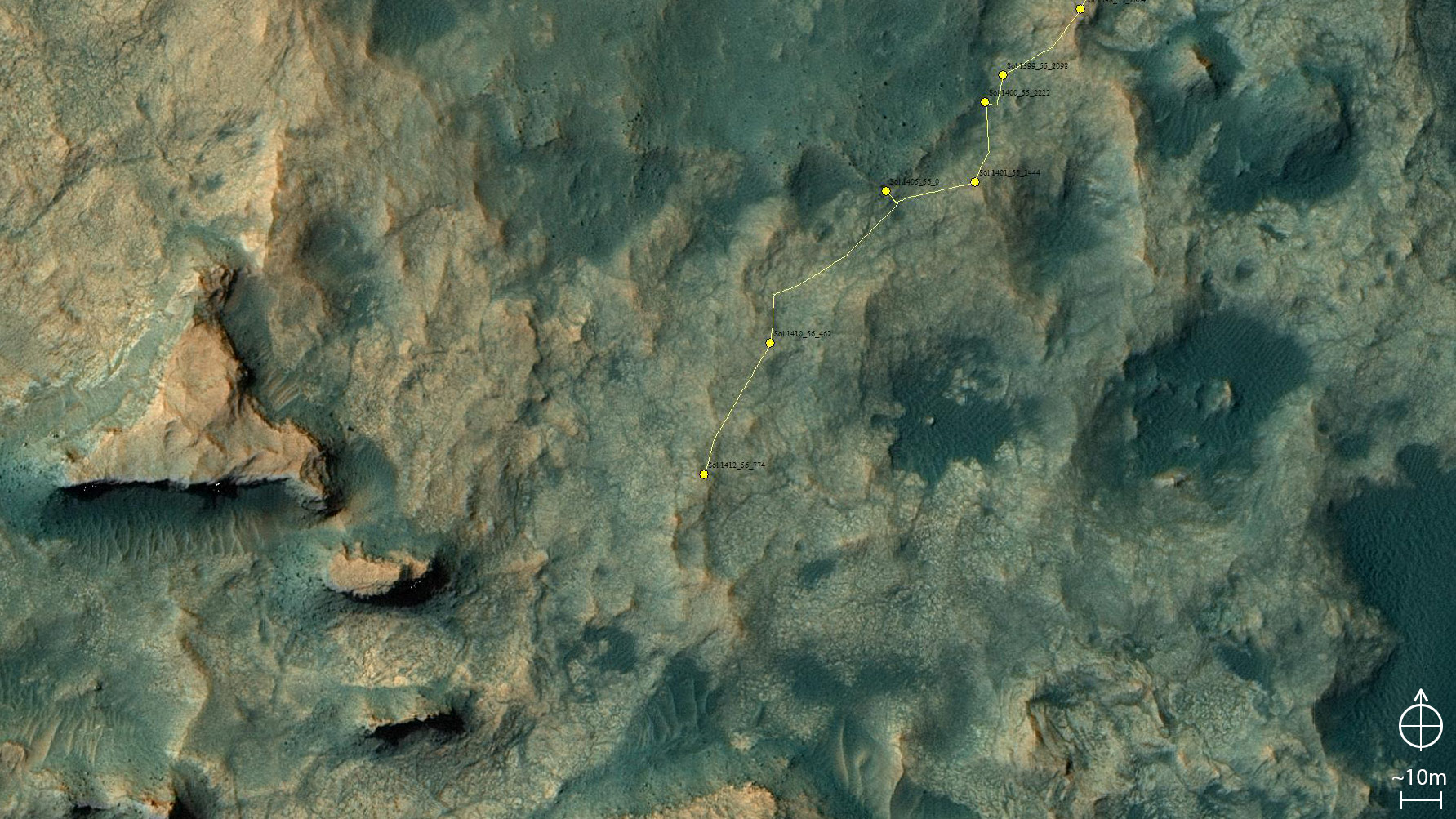At last you have landed on Mars! You now need to find out more about the planet which will be your home for some time.
How will you explore your new home? As you learnt on page 3, there have already been unmanned space missions to Mars, and these will give you some ideas about how you could explore Mars.
One important mission to Mars is the NASA Mars Science Laboratory mission which commenced in 2011. On 6th August, 2012, a ‘rover’ robot called ‘Curiosity’ was set down within the ‘Gale Crater’ on Mars. The robot has wheels, and can ‘rove’ (ie. wander around) and gather information.

NASA

NASA/JPL-CALTECH/ASU
